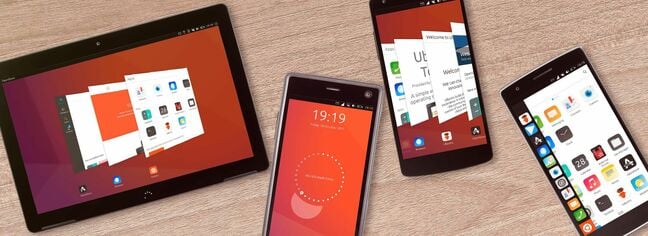This article is more than 1 year old
UBports community delivers 'second-largest release of Ubuntu Touch ever'
Linux for smartphones: OTA-16 brings fixes for brave Android avoiders
UBports, a community project to build Ubuntu for smartphones, has released OTA-16, a new version of Ubuntu Touch with numerous updates – yet the dream of a viable alternative to iOS and Android seems as distant as ever.
Ubuntu Touch was originally an official Canonical project, with version 1.0 released in 2013, but the company withdrew in early 2017 when CEO Mark Shuttleworth stated:
"I took the view that, if convergence was the future and we could deliver it as free software, that would be widely appreciated both in the free software community and in the technology industry, where there is substantial frustration with the existing, closed, alternatives available to manufacturers. I was wrong on both counts."
The move also ended the development of the Unity desktop, intended to converge desktop and mobile, with Ubuntu reverting to GNOME.
The community-supported UBports project, founded by Norwegian Marius Gripsgard, took over development and released Ubuntu Touch 15.04 OTA-2 in September 2017. That the team has moved up to OTA-16 is impressive; the less good news is that mobiles running Ubuntu Touch are a long way from mainstream.

Ubuntu Touch running on a range of devices (pic: UBports CC-BY-SA-4.0)
It can be pre-installed on Volla Phone or installed after purchase on a range of devices including Fairphone and around 50 others. PinePhone is supported in general by Ubuntu Touch but not by this release. Unfortunately, we do not have any of the compatible devices to hand so a try-out with OTA-16 will have to wait.
The new release updated the Qt framework used for the OS from 5.9.5 to 5.12.9. "Upgrading it put us back inside Qt's long-term support cycle," the team stated, as well as enabling future new features. It also helps prepare for an upgrade of the base OS from Ubuntu 16.04 to 20.04, though OTA-16 is still based on 16.04.
The web browser in Ubuntu Touch is called Morph, and based on the Qt WebEngine, which uses de-Googled code from the Chromium project. In this release there is a revamped download system, a fixed-page zoom, and a new checkbox to "always deny location" for a specific web page.
A previous Canonical-developed web engine called Oxide has not been used since 2018; it seems that some Ubuntu Touch apps depend on Oxide and we were warned that these will now not work. Anbox, which lets users run Android applications, now has its installer included by default, but Anbox itself is not pre-installed. Video recording, which was broken on 32-bit phones designed for Android 7, has been fixed, and there are a number of other improvements.
Ubuntu Touch is not the only Linux-based OS for smartphones. There is also the Debian-based PureOS, used by Librem devices, KDE-supported Plasma Mobile, Jolla's Sailfish OS, postmarketOS, and more. There are others, like the /e/ Foundation, which uses an OS based on the Android Open Source Project with code added to fill the gap left by Google's proprietary apps and services. All the options have minuscule market share and are likely to elicit blank looks for those who enquire about them at their local mobile phone stores.
The difficulty has been that while it is easy to see the value of a strong open-source alternative to Android and iOS, there are almost too many options, none of which have mainstream appeal.
The thinking behind Ubuntu Touch, and a possible way out of the problem, was always convergence – the idea that one carefully designed OS can run on both mobile and desktop, and perhaps both at once via connection to a desktop display, keyboard, and mouse. It is a long-standing concept that seems to make sense, but has proved so far impossible to implement well enough to win mass appeal. ®
